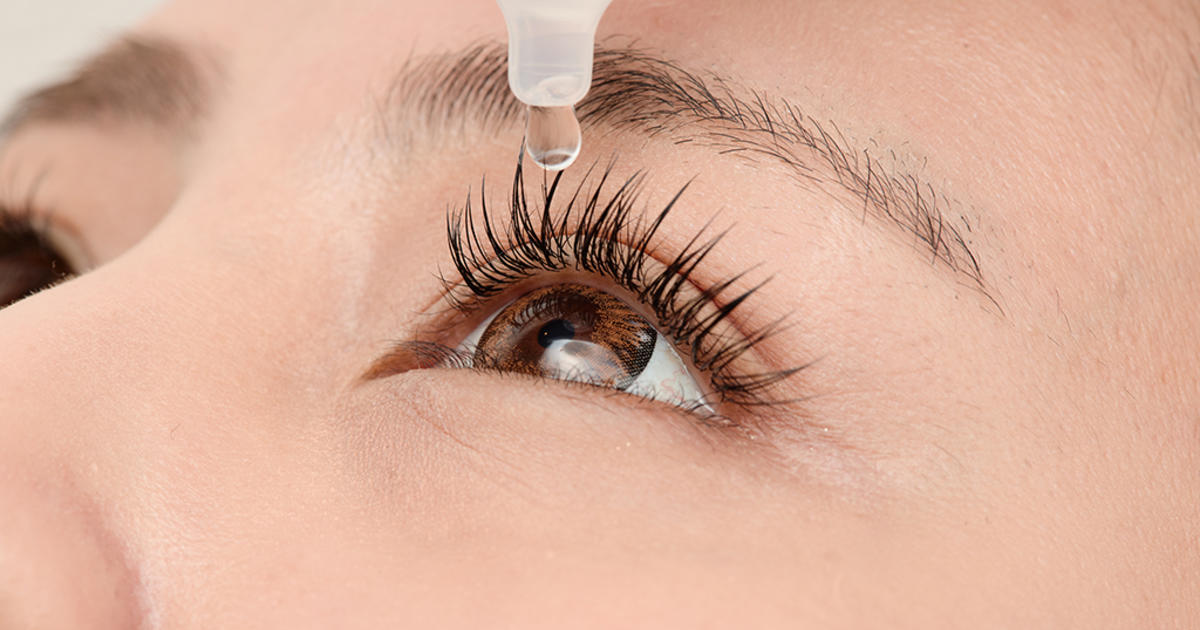
How to check if your eye drops are safe amid flurry of product recalls

Good Question: What guidelines should we follow when buying eye drops?
02:25
Amid a glut of alarming news about eye drops, people who use over-the-counter versions would be wise to check whether the product has been recalled before use, especially if it’s been in the bathroom cabinet for awhile.
To ensure your eye drop brand is safe, start by checking the Food and Drug Administration’s list to see if it’s one of 28 different types of drops recalled in recent weeks due to bacteria that can cause eye infections, resulting in possible vision loss or blindness.
Commonly referred to as artificial tears, the recalled eye drops are primarily over-the-counter lubricating drops used to relieve symptoms such as grittiness, dryness and itching, Dr. Christoper Starr, spokesperson for the American Academy of Ophthalmology (AAO), said in an email to CBS MoneyWatch.
branded as ErziCare and Delsam Pharma. More than 80 people were stricken in 18 states, with four dying and more than two dozen others losing vision.
4 deaths linked to contaminated eye drops outbreak
00:25
Since that outbreak, the FDA has become more stringent in monitoring the safety of over-the-counter drops. Rather than being prompted by a rash of infections, the most recent recall was spurred after the agency found they “weren’t being manufactured in an appropriate way,” said Dr. Ashley Brissette, also a spokesperson for AAO and assistant professor of ophthalmology at Weill Cornell Medicine and New York Presbyterian Hospital.
The 28 recalled eye drop products were all manufactured by a company called Kilitch Healthcare India, with FDA investigators finding unsanitary conditions at the facility.
The spate of recalls, whether for real safety issues or for misleading product claims, “scares a lot of people, including those prescribed eye drops for conditions like glaucoma,” Brissette told CBS MoneyWatch. But she emphasized that no prescription drops have been recalled, urging people to continue taking prescribed eye drops and to call their ophthalmologist if they have concerns or questions. The AAO also operates a site with information about eye health issues.
Check the expiration date
Product contamination also can occur outside a manufacturing plant, which is another reason not to use eye drops past their expiration date, according to Brissette.
“How the drops are used — the tip of the bottle to the face or the eyeball itself — that can cause cross-contamination,” she noted, advising people to wash their hands before using drops.
“I remind everyone to also check expiration dates of their eye drop bottles. If expired, please discard them, as there is a higher risk of contamination even with non-recalled, well-manufactured eye drops,” Starr said. “If anyone using these drops has eye discharge, redness or pain (i.e. signs of infection) they should see an ophthalmologist immediately.”
According to the CDC, eye infection symptoms may include:
- Yellow, green, or clear discharge from the eye
- Eye pain or discomfort
- Redness of the eye or eyelid
- Feeling of something in your eye (foreign body sensation)
- Increased sensitivity to light
- Blurry vision
Kate Gibson
Source: cbsnews.com